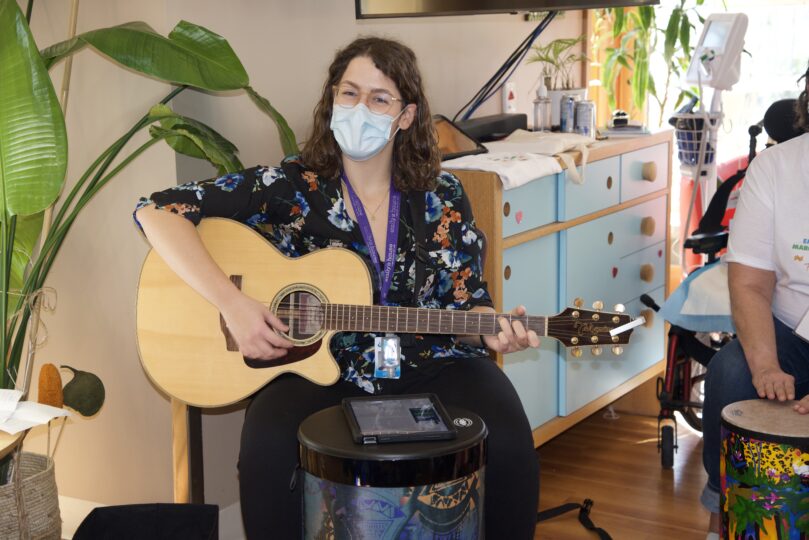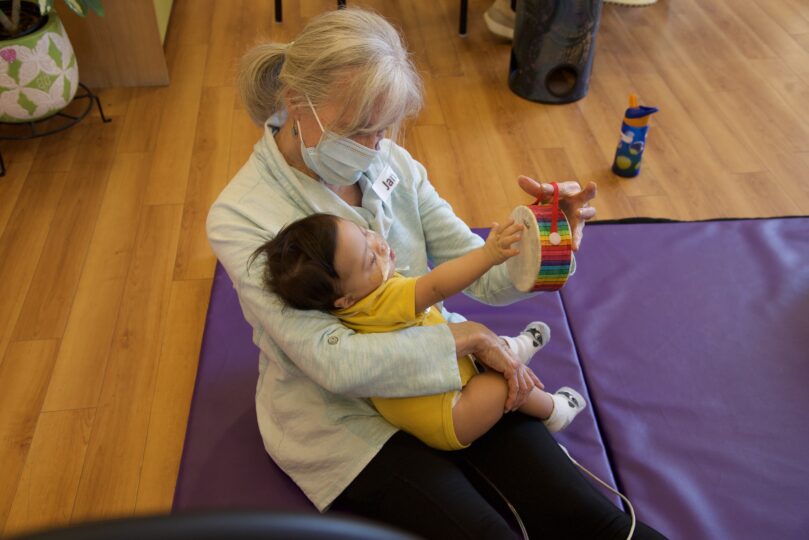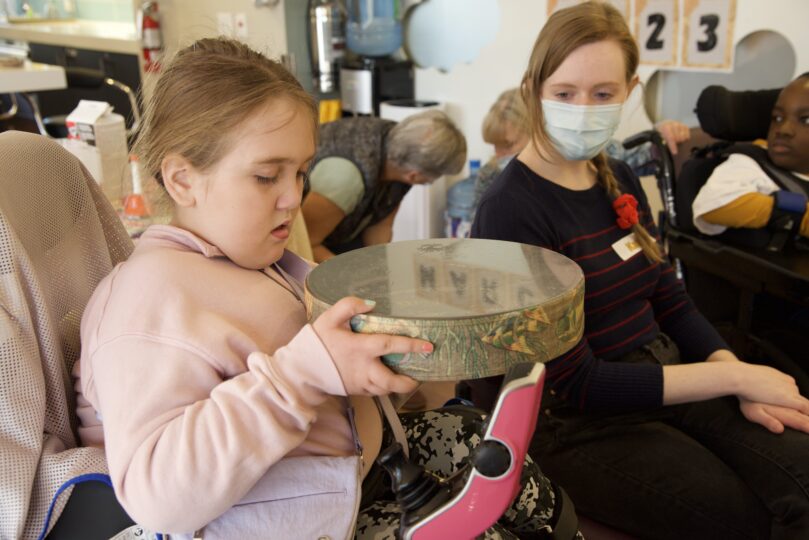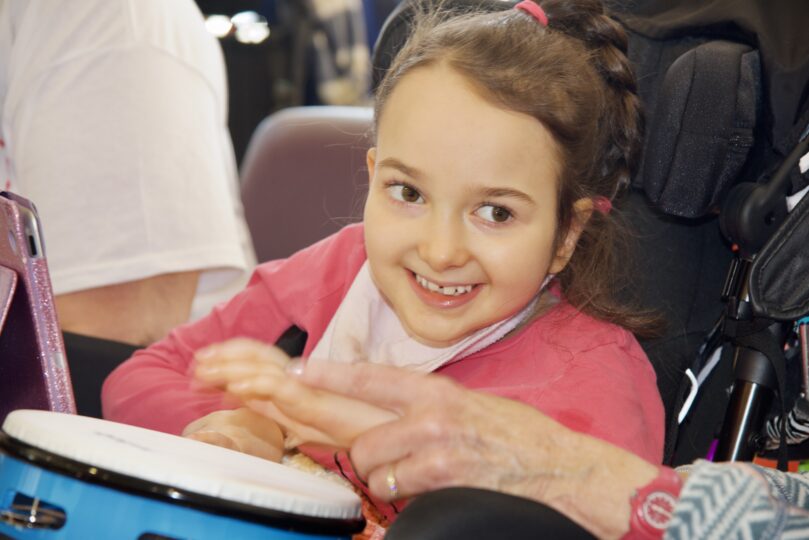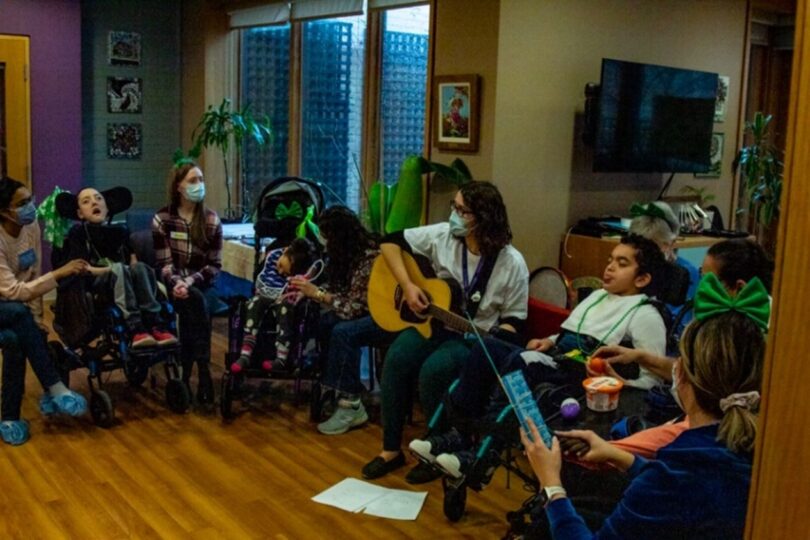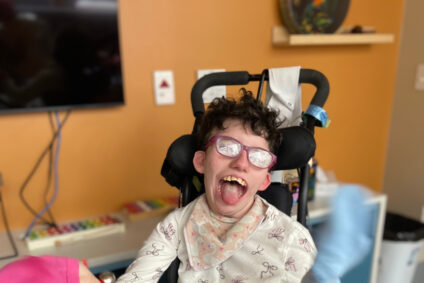Music Therapy and its Role in Palliative Care at Emily’s House and PAC
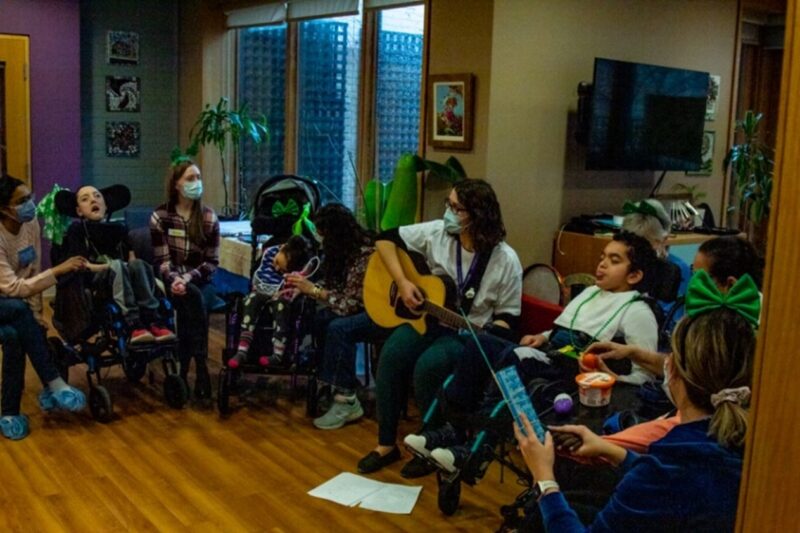
March is Music Therapy Awareness Month, and at Emily’ House children’s hospice and the Philip Aziz Centre for Hospice Care, we are proud to have Music Therapy be an important role on our team.
In 2022/2023, Emily’ House and the Philip Aziz Centre held 515 Music Therapy sessions in-hospice and in-homes.
Read on to learn more about the Music Therapy program.
What is Music Therapy?
Music Therapy is the purposeful use of music by an accredited Music Therapist (MTA) to support a person’s therapeutic goals of care such as self-expression, symptom management, or skills development. Music Therapists work with clients to assess their individual needs, sets goals based on those needs, and plan and implement musical interventions such as songwriting, vocal and instrumental improvisation, lyric discussion, or listening to familiar and preferred songs to reach those goals. Music Therapists use musical safely and ethically to support overall quality of life.
How is Music Therapy used in hospice care?
Music Therapy is effective for sharing emotions, connecting with others, managing distressing symptoms, making memories, and communicating without words. Because of this, Music Therapy is a part of many of our programs. At Emily’s House, Emily’s House @ Home and the Philip Aziz Centre, Music Therapy is offered as individual one-on-one sessions and family sessions. Groups take place regularly onsite at Emily’s House with our respite children/teens, during special camp weeks at the house, and virtually with our EH@H families. Music Therapy also supports families after a loss by journeying alongside them in their grief through individual support sessions and by supporting our memorial events.
Client Impact – Child: Curled up in a beanbag, as the child’s eyes followed colourful bubbles swirling rhythmically in the bubble tank tower, child and Music Therapist created a spontaneous song with humming, words, music, and a rhythmic response of their own on the drum: like a musical call-and-response. In another activity, the therapist introduced a wind chime instrument and helped the child access a tactile experience of “twinkle fingers” on a bundle of glittering strings. In Music Therapy, a child with complex disability can create and communicate without words, travel imaginatively beyond himself, and engage with the world around him through senses and sounds.
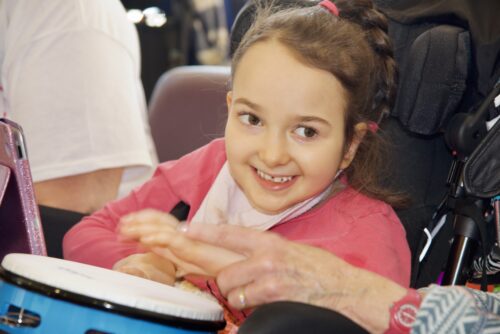
What are the benefits of Music Therapy?
Music Therapy at Emily’s House and Emily’s House @ Home serves many purposes. It helps children and teens with life-threatening illnesses:
- express emotions,
- connect with others,
- communicate non-verbally,
- and manage distressing symptoms like anxiety or pain.
- It can also give families a chance to create joyful memories together while just being themselves- a parent, child, or sibling.
Music Therapy in the Philip Aziz Centre’s home visiting program is tailored to each person’s unique needs and wishes. Music Therapy can support:
- self-expression,
- gaining personal insight and making meaning out of life’s experiences,
- reducing distressing symptoms like pain or anxiety,
- reminiscence and legacy creation, and
- can provide deep comfort and relaxation.
- It can also foster meaningful connection between family and the people closest to us by sharing in the experience together.
Are there certain styles of music that are more effective than others?
In Music Therapy, there is no “one-size-fits-all” when it comes to choosing music. No particular style or genre is more effective than another. The most therapeutically effective music is the one the patient prefers. Working with people across the lifespan, from newborn to over 100 years-old, and who come from many different parts of the world, I am often learning new music to bring into visits.
What is your favourite part of being a Music Therapist at Emily’s House and the Philip Aziz Centre?
For me, one of the most inspiring parts of being a Music Therapist is seeing the way music connects people: to themselves, their family, and communities. Every day is different and calls for me to be creative and responsive to what people need in the present moment. In every visit though, a connection with the music is so important. I have seen both laughter and tears as families sing special songs together. An adult child shared her gratefulness when gentle music, played to match the breath of her mother, helped lull her into a peaceful sleep after experiencing pain for quite some time. I’ve heard the pride in a parent’s voice when their child played the drum for the first time in their life- an experience they had never imagined. I feel honoured each time I am invited into a room or home, where I often witness the immense love and spirit our clients and families have in making the most of every day.
Special thanks to The Lillian Meighen and Don Wright Foundation, the lead donor who helps make this program available to our children and families.
